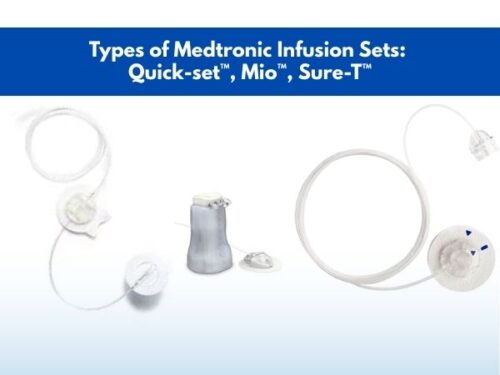Tracheostomy tube: What is it and when is it needed?

One of the frequently practiced procedures on patients with impaired respiration is tracheostomy which is the process of making an incision into the trachea with intention of inserting a tube in it. This tube, called the tracheostomy tube, assists the breathing process by providing a way for the air to pass in order to reach the alveoli. Let us take a look at what exactly a tracheostomy tube is and on which occasions its use becomes unavoidable.
What is a tracheostomy tube?
A tracheostomy tube or trach tube is a hollow tubular device that is employed in the trachea to facilitate the process of breathing. A small surgery is performed to place and fix the tracheostomy tube into the air passageway. Mostly, their placement is for a temporary period followed by removal as soon as the patient recovers from the afflicted respiratory condition. But these tracheostomy tubes can be used for longer periods if necessary.

A tracheostomy tube inserted into a patient’s trachea
Materials used to manufacture tracheostomy tubes
The following materials are used to manufacture a tracheostomy tube:
- Stainless steel
- Silver
- Polyvinyl chloride (PVC)
- Polyurethane
- Silicones
Parts of a tracheostomy tube
A tracheostomy tube consists of the following parts:
Outer cannula: Outer cannula is responsible for keeping the tracheostomy tube open and allowing the unrestricted passage of air or fluid.
Inner cannula: The outer cannula is proceeded by the inner cannula which helps in the retention of the tracheostomy tube inside the tracheal hole. This inner cannula must be replaced every two weeks to minimize the chances of infections.

The outer and inner cannula of a trach tube
Trocar/Obturator: A trocar or obturator facilitates the intra-tracheal administration of the tracheostomy tube.

Obturator or trocar of the trach tube
Cuff: A cuff is a section of the trach tube which assists in its retention in the trachea. It is a balloon-like structure. Based on the presence or absence of the cuff, the tracheostomy tubes can be categorized as cuffed or un-cuffed.

The cuff of a tracheostomy tube
Connector: A connector is needed to serve as an attachment between the shaft and the cannulas.

The connector of a tracheostomy tube
Faceplate or flange: Faceplate, neck plate, or flange is the part extending from the sides of the tracheostomy tube. These assist in keeping the tube affixed in its place. Velcro straps or clothing ties can be attached to this flange with the help of its holes.

Flange of the trach tube
Types of tracheostomy tubes
The tracheostomy tubes, based on their design, can be classified into the following categories:
- Cuffed tracheotomy tubes
- Un-cuffed tracheostomy tubes
- Single-lumen tracheostomy tubes
- Double-lumen tracheostomy tubes
- Fenestrated tracheostomy tubes
- Portex tracheostomy tubes
- Adjustable flange tubes
Who needs a tracheostomy tube?
A tracheostomy tube can be employed for the following purposes:
- A trach tube can serve as an alternative pathway for the air in cases when the respiratory pathway is hindered by a tumor or a disease state.
- The tracheostomy tubes can also be used to take out the fluid entrapped in the lungs.
Patients with any of the following complications require the tracheostomy tube for breathing properly:
- A state of unconsciousness or coma
- Infections of the respiratory system or other critical lung diseases
- Inflamed respiratory tract
- Sleep apnea i.e. breathing difficulties while sleeping
- Tracheal clogging due to excess mucus discharge
- Aspirational pneumonia
- Surgical reconstruction of the respiratory tract
- Cancer of the oral cavity
- Carcinoma of the neck region
- Brain tumors
- Congenital impairment of the tracheal tube
- Anaphylactic shock i.e. severe allergic reaction to a substance
- Presence of a sac-like structure between the head and the neck region congenitally i.e. cystic hygroma
- The presence of the fibrous tissue membrane below the airway passage which hinders the airflow i.e. subglottic web
- Facial surgery or burns
- Paralysis of the vocal cords
- Laryngeal spasms
- Injury to the larynx or the tracheal lining
- Tracheal blockage
- Small-sized trachea especially in children
- Improper facial development due to genetic causes i.e. Treacher-Collins syndrome
Risk factors associated with the use of tracheostomy tubes
The use of tracheostomy tubes is safe enough to render it free of complications. However, like any other medical device, the tracheostomy tubes are also associated with some minor issues which, if go unchecked and untreated, can result in severe adverse reactions. These include:
- Bleeding: While inserting and fixing a tracheostomy tube, it is necessary to look for any bleeding which may start due to the rupture of the tracheal mucosa. If the bleeding is noticed, the tube must be pulled out of the trachea and the patient must be treated.
- Infection: With the use of any medical device which is administered into the body, the risk of infections is imminent as the transfer of bacteria into the bloodstream via the device is common. To prevent this situation, the sterility of the tube before insertion must be ensured. Furthermore, the trach tube must be handled and inserted with neat and clean hands in a germ-free environment.
Conclusion
Tracheostomy tubes fall into the category of medical equipment which is considered essential for the hospital setup. Their ease of insertion gives them superiority over the other types of breathing assistances which can be used in patients with respiratory impairments. These not only provide a passageway for the air to reach into the lungs but also a way for the trapped fluids to be sucked out. Due to these important functionalities, tracheostomy tubes are considered an essential item.



















